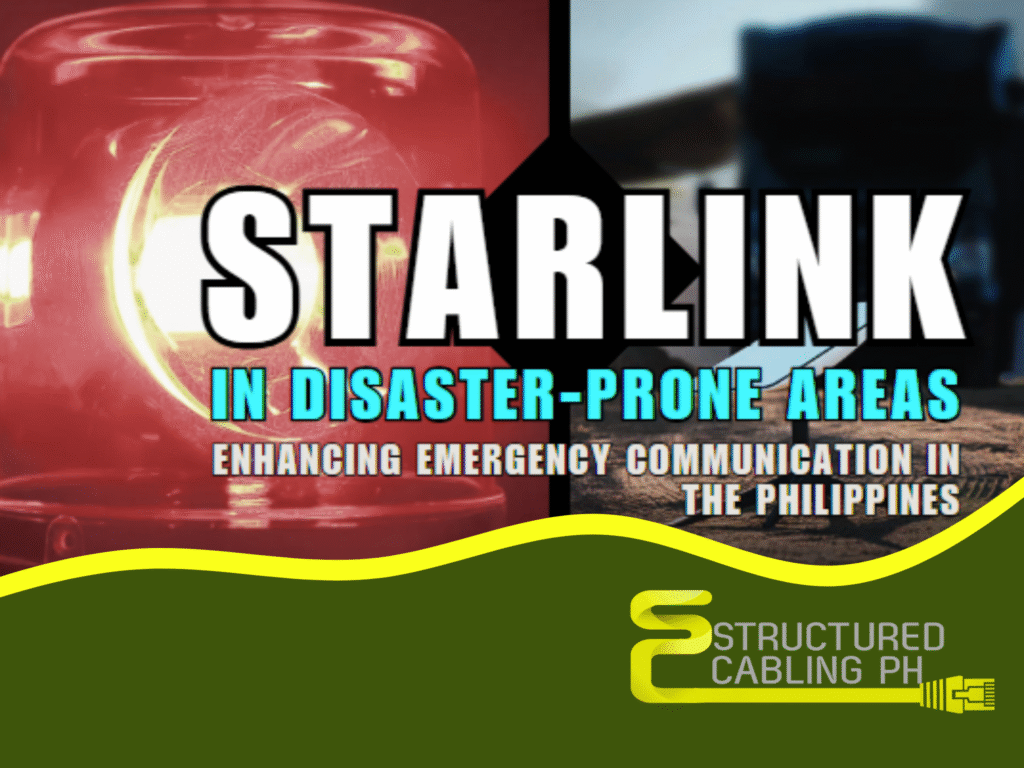When every second counts, a reliable internet connection can help save lives.
The Philippines is no stranger to
natural disasters. With an average of
20 typhoons a year, active volcanoes, frequent earthquakes, and the constant threat of flooding and landslides, our communities, especially those in far-flung islands and mountainous areas face serious risks every year.
In these moments,
communication becomes critical. Lives depend on timely updates, coordination among first responders, and getting help to the right places. But all too often,
telecom networks go down right when they’re needed the most.
This is where
Starlink, the
satellite internet service by SpaceX, is proving to be a powerful ally for the Philippines.
Why Traditional Networks Often Fail During Disasters
Most of our current internet infrastructure relies on:
- Fiber-optic cables that can be damaged by floods or earthquakes
- Cell towers that are vulnerable to strong winds and landslides
- Power grids that go offline during storms, taking networks with them
When these systems fail, it becomes difficult for:
- LGUs to coordinate rescue and relief
- Families to call for help or contact loved ones
- Health workers to report emergencies or request supplies
How Starlink Works—And Why It Makes a Difference
Starlink doesn’t rely on cables or ground-based towers. Instead, it connects through a
constellation of low-Earth orbit (LEO) satellites. These
satellites beam internet directly to a
satellite dish that can be installed anywhere with a clear view of the sky.
That means:
- No dependence on damaged infrastructure
- Quick setup in disaster zones
- High-speed internet even in remote areas
In emergencies,
this can be a game-changer.
Real-World Use: Starlink in Philippine Disasters
During recent disasters,
LGUs, NGOs, and rescue teams have started using Starlink to stay online even when other networks go dark.
Here’s what it allows them to do:
- Maintain real-time communication with national agencies like NDRRMC
- Coordinate search and rescue missions more effectively
- Enable telemedicine in isolated health stations
- Send reports, images, and updates to relief organizations for faster response
In areas hit by
Typhoon Egay and Paeng, for example, several relief teams were able to install Starlink kits within hours and
immediately restore internet access, allowing vital operations to continue.
Starlink and Community Resilience
Beyond emergency response, Starlink also supports
preparedness and long-term resilience:
- Remote barangays can train in disaster response online
- Local health units can join webinars on emergency protocols
- Youth groups and volunteers can organize digital watch groups
When communities are connected, they’re
more informed, more coordinated, and more empowered to handle disasters.
Easy Setup in Critical Moments
In emergencies,
speed matters. Starlink is:
- Portable – fits in a small box, easy to carry
- Fast to deploy – up and running in less than an hour
- Power-efficient – works with solar panels or generators
This makes it perfect for:
- Emergency operations centers (EOCs)
- Mobile medical teams
- Temporary evacuation camps
Challenges to Keep in Mind
While Starlink is incredibly useful, it’s not without limitations:
- Cost – Initial hardware and subscription fees can be a challenge for underfunded LGUs
- Weather impact – Heavy rains may temporarily reduce signal quality
- Supply and logistics – Limited availability in some regions
Still, the benefits far outweigh the drawbacks, especially when lives are on the line.
A More Connected, Disaster-Ready Philippines
As the Philippines continues to face climate-related risks and natural hazards, investing in resilient
communication tools like
Starlink can make a real difference.
With Starlink,
no island is too remote, and no barangay is too isolated. Even in the middle of a typhoon or an earthquake’s aftermath, Filipinos can stay connected, stay informed, and stay safe.
Want to learn more about how Starlink can support your community?
Visit
VastResult or coordinate with your local disaster response team. Connectivity can’t prevent a disaster, but it can save lives when disaster strikes.
Contact VastResult today at
(02) 8404 0740 or email us at
support@vastresult.com.


